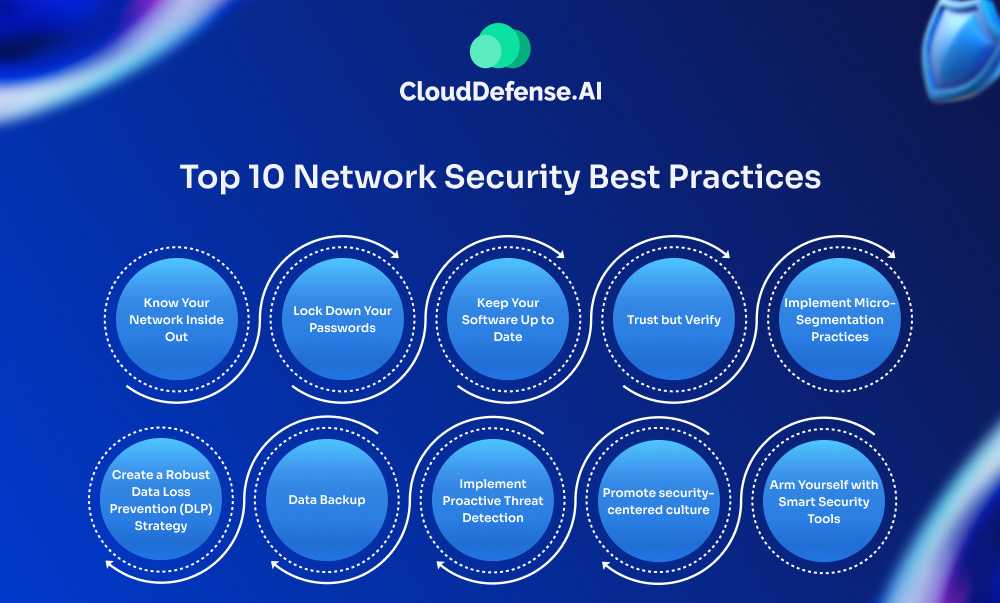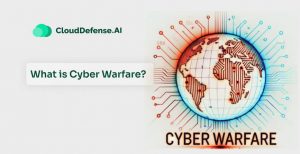Cybersecurity challenges are escalating, and businesses must act decisively to protect their networks. Today’s hyper-connectedness makes network security a make-or-break factor for businesses of all sizes. But let’s face it: the broad context of network security can be overwhelming, filled with jargon and complex technologies.
That’s precisely why we’ve compiled a list of the top 10 network security best practices that every organization should implement.
What Is Network Security?
Network security is about keeping your data, applications, and systems safe from threats. It’s a critical job, especially when dealing with modern networks, including the cloud. You need strong, secure communication and proper access controls. Without that, you’re leaving yourself open to attacks, and you can’t afford that.
What’s important here? Protecting hybrid infrastructures. You do this with advanced technologies, smart strategies, and clear policies. The goal is simple: stop unauthorized access, defend against cyber threats, and prevent data breaches. It’s about being tough, staying prepared, and keeping things under control. This is how you ensure security in today’s world.
Here’s what network security covers:
- Firewalls: Blocking suspicious traffic.
- Encryption: Securing data in transit and storage.
- Access Controls: Ensuring only authorized users can access critical resources.
- Intrusion Detection Systems: Identifying and stopping threats in real-time.
Ask yourself this: Is your current network security strategy strong enough to handle today’s advanced cyberattacks? If not, now’s the time to take action.
Top 10 Network Security Best Practices

1. Know Your Network Inside Out
Ever stopped to think about what’s really happening inside your network? How many devices are connected right now? Which users have access to sensitive data? If you’re unsure, you’re not alone—but here’s the hard truth: you can’t secure what you don’t fully understand.
Knowing your network inside out isn’t just a good idea—it’s the foundation of any strong security strategy. Here’s what you need to focus on:
- What devices are connected to my network? From company-issued laptops to employees’ personal smartphones, every device matters.
- Is my software up to date? Outdated software is a goldmine for hackers.
- Who has access to sensitive areas? Over-permissioned accounts are a common vulnerability.
By doing this, you’ll be able to:
- Spot unauthorized devices or applications
- Identify outdated software that needs updating
- Review and adjust user access rights
- Discover any forgotten or “shadow IT” systems
Your network is constantly diversifying. New devices, fresh applications, and added users make it a moving target. By staying proactive with regular assessments and keeping your inventory up-to-date, you establish a solid foundation for every other security measure you put in place. This isn’t about guesswork; it’s about control and precision.
2. Secure Your Passwords
How many of us are guilty of using “123456” or “password” at some point? Maybe not now, but the temptation to choose convenience over security is real. Weak passwords are a hacker’s dream—like leaving your front door wide open with a welcome sign.
But here’s the truth: password security is non-negotiable. Cybercriminals are getting smarter, and guess what? Testing weak or reused passwords is often their first move. So, how strong is your defense?
Ask Yourself These Key Questions:
- Are your company’s password policies strong enough to withstand brute-force attacks?
- Do employees reuse passwords across multiple accounts?
- When was the last time anyone changed passwords for critical systems?
If the answers make you uncomfortable, it’s time to step up your password game.
Steps to Lock It Down:
- Implement strong password policies. This means:
- At least 12 characters long.
- A mix of uppercase, lowercase, numbers, and symbols.
- Avoid predictable phrases, names, or personal info.
- Enable Multi-Factor Authentication (MFA):
Even if someone guesses a password, MFA acts as an extra security wall, requiring something only the user has (like a phone or hardware token). - Adopt a Password Manager:
Encourage the use of tools like LastPass, Dashlane, or Bitwarden. These create and store complex, unique passwords for each account, making password management painless and secure. - Implement Regular Password Updates:
Make it a policy to update passwords for sensitive systems at least every 90 days. - Educate Your Team:
Employees are often the weakest link in password security. Conduct training sessions to explain:
- The risks of reusing passwords.
- Why sharing passwords is a no-go.
- How to create secure passwords that don’t compromise ease of use.
Weak passwords are an open invitation for cyberattacks. By implementing these practices, you’re not just protecting your network—you’re building a culture of security. Remember, a secure password isn’t just about length or complexity; it’s about creating a habit of vigilance.
3. Keep Your Software Up to Date
When’s the last time you actually clicked “Update Now” instead of “Remind Me Later”? Be honest! Consider these questions:
- Do you have a system for tracking software versions across your network?
- How quickly do you apply security patches when they’re released?
- Are any of your systems running on outdated, unsupported software?
It’s easy to put off updates. They can be time-consuming and sometimes cause short-term disruptions. But here’s the thing: many cyber attacks exploit known vulnerabilities that have already been fixed in newer versions.
Here’s what you should do:
- Create an inventory of all software used in your organization.
- Set up automatic updates wherever possible, especially for operating systems and security software.
- Establish a regular schedule for checking and applying updates manually where needed.
- Pay special attention to critical security patches – these should be applied as soon as possible.
- Plan to phase out any software that’s no longer supported by its vendor.
- Test updates on non-critical systems before rolling them out widely.
4. Trust but Verify
In cybersecurity, blind trust is a risky game. Even the most trustworthy-looking scenario can be a trap. That’s why the principle of “Trust but Verify” is critical to protecting your network and data.
Let’s put it into perspective:
- How can you be sure that email from your CEO requesting an urgent wire transfer isn’t a phishing attempt?
- Can you really trust every device connecting to your network—especially in the age of BYOD (Bring Your Own Device)?
- Is every user in your system still meant to have access to sensitive information?
Given today’s digital vastness, trust alone isn’t enough. Verification needs to be baked into your security processes.
How to Practice “Trust but Verify”:
1. Strengthen Authentication Measures:
- Passwords are just the first layer. Add Multi-Factor Authentication (MFA) to make unauthorized access significantly harder.
- For extra-sensitive systems, consider biometric authentication or hardware tokens.
2. Verify Email Requests:
- Phishing scams are everywhere. If an email asks for sensitive information or urgent action, verify it. Pick up the phone or use an alternate channel to confirm the sender’s identity.
- Train your team to spot red flags like generic greetings, spelling errors, or unusual urgency.
3. Use Digital Signatures and Encryption:
For critical communications and transactions, encrypt emails and use digital signatures. This ensures authenticity and prevents tampering.
4. Audit Access Privileges Regularly:
- Employees come and go, and roles evolve. Review access levels routinely to ensure users only have the permissions they need right now.
- Remove “stale” accounts that haven’t been used in months—they’re potential backdoors for attackers.
5. Monitor for Anomalies:
- Use AI-powered tools to detect unusual patterns in network activity, like:
- Logins from unrecognized locations.
- Sudden spikes in data transfers.
- These red flags could be early signs of a breach.
6. Encourage a Culture of Verification:
- Make it clear to your team that it’s okay to double-check, even with higher-ups.
- Train employees to think critically about requests and question anything that seems even slightly suspicious.
5. Implement Micro-Segmentation Practices
Think of your network like a building. Should everyone who walks through the front door automatically have access to every room? Absolutely not. The same goes for your network. Just because someone gains access to one part doesn’t mean they should be able to stroll into the entire system.
Consider these questions:
- If someone breached one part of your network, could they easily access everything else?
- Are your most critical assets separated from the general network?
- How do you control traffic between different parts of your network?
Network segmentation is about creating separate “zones” within your network. It’s a key strategy to limit damage if a breach occurs.
Here’s how to do it:
1. Identify Your Critical Assets:
- Not all data or systems are created equal. Think about what systems or data would cause the most harm if they were exposed or compromised.
- Customer data? Intellectual property? Financial systems? Protect these first.
2. Create Separate Network Segments:
- Group your network into functional areas. For example:
- Customer data should live on a separate segment than your public-facing website.
- Internal resources (HR systems, finance) should be isolated from less-sensitive employee devices.
- This prevents attackers from moving freely within your network.
3. Control Traffic Between Segments:
- Use firewalls or Virtual LANs (VLANs) to regulate traffic flow between these segments.
- Minimize connections between segments. Only allow access to critical areas when absolutely necessary.
4. Limit Access:
Not everyone in your network needs to access every zone. Implement access controls to ensure only authorized personnel can connect between segments.
5. Monitor Traffic:
Keep an eye on what’s happening between your network segments. If traffic patterns suddenly change—like an unusually high volume of data moving between two segments—it could signal an attempted breach.
6. Consider a Zero Trust Model:
A Zero Trust approach is crucial here. Assume every connection request—even from within your own network—could be malicious. Verify everything before granting access.
6. Create a Solid Data Loss Prevention (DLP) Strategy
What’s the most valuable thing in your business? It’s probably not the computers – it’s your data. To craft the best DLP strategy, you need to consider certain questions:
- Do you know where all your sensitive data is stored?
- How do you prevent data from leaving your network without authorization?
- What would happen if an employee accidentally emailed confidential information to the wrong person?
Creating a solid DLP strategy is crucial in today’s data-driven world. It’s about ensuring your important information doesn’t end up in the wrong hands.
Here’s how to build an effective DLP strategy:
- Identify your sensitive data. This could be customer information, financial records, intellectual property, etc.
- Classify your data based on its sensitivity. Not all data needs the same level of protection.
- Implement DLP tools that can monitor, detect, and block sensitive data from leaving your network.
- Set up policies for how data can be used and shared. For example, maybe certain files can’t be emailed outside the company.
- Educate your employees. Many data leaks are accidental, so make sure your team knows how to handle sensitive information.
- Monitor and log data movement. This helps you spot unusual activity and investigate if needed.
- Have an incident response plan. If data does leak, you need to know how to react quickly.
7. Data Backup
Imagine coming to work one day and all your data is gone. Scary, right? So, how often do you back up your data? Where are your backups stored? Have you ever tried to restore from a backup?
Backing up your data isn’t just good practice – it’s a lifesaver when things go wrong. And in the world of cybersecurity, it’s not if, but when.
Here’s how to approach backups:
- Follow the 3-2-1 rule. Have at least 3 copies of your data, on 2 different types of media, with 1 copy off-site.
- Automate your backups. Human memory isn’t reliable enough for this crucial task.
- Encrypt your backups. A stolen backup can be just as damaging as a breach.
- Regularly test your backups. Can you actually restore from them when needed?
- Consider cloud backups for additional redundancy.
- Don’t forget about system configurations and software settings – these need backing up too.
8. Implement Proactive Threat Detection
Most security measures are reactive – they respond to threats. But what if you could catch the bad guys before they strike?
Consider:
- Are you actively looking for threats in your network, or just waiting for alarms to go off?
- Do you know what ‘normal’ looks like in your network, so you can spot the abnormal?
- How quickly could you detect a breach if it happened right now?
Proactive threat hunting is about actively searching for threats that have evaded your initial defenses.
Here’s how to get started:
- Assume breach mentality. Act as if you’ve already been compromised and hunt for evidence.
- Use advanced tools like SIEM (Security Information and Event Management) to collect and analyze log data.
- Look for Indicators of Compromise (IoCs) – signs that you might have been breached.
- Regularly scan your network for vulnerabilities and misconfigurations.
- Stay informed about new threats and attack techniques. Knowledge is power in threat hunting.
- Conduct regular security exercises, like the red team vs blue team, to test your defenses.
9. Promote security-centered culture
Cybersecurity isn’t just about firewalls and encryption; it’s about promoting a culture of security awareness. This means everyone, from the CEO to the intern, understands their role in protecting sensitive information. Building this culture requires leadership commitment. Leaders who prioritize security by setting clear expectations and demonstrating secure behavior become role models.
Regular security training empowers employees to identify threats, report suspicious activity, and handle data responsibly. Open communication is key – employees shouldn’t fear repercussions for reporting mistakes. By creating a culture where everyone pitches in and keeps on learning, companies form the ultimate defense against these threats that keep popping up.
10. Arm Yourself with Smart Security Tools
Ask yourself: How well do your current security tools work together? Can you detect and respond to threats in real time? Are you leveraging AI and machine learning in your security strategy?
Using advanced security solutions like CloudDefense.AI can significantly boost your defense capabilities. These tools bring together various security functions and use cutting-edge technology to protect your assets.
Here’s why:
- Comprehensive protection: CloudDefense.AI offers a suite of tools that cover multiple aspects of security – from vulnerability management to compliance monitoring.
- Real-time threat detection: It uses AI to spot anomalies and potential threats as they happen, not hours or days later.
- Automated response: In the event of an attack, every second counts. CloudDefense.AI has tools that can automatically respond to threats and save crucial time.
- Cloud-native security: As more businesses move to the cloud, you need security that’s built for this environment.
- Continuous compliance: Stay on top of regulatory requirements with CloudDefense.AI and continuously monitor your compliance status.
- Integration capabilities: Ensure the solution can work with your existing tools and systems for a unified security approach.
Final Words
We hope this deep dive into network security best practices has been informative! No one wants to deal with a hacked computer or a data breach, so let’s put these tips into action and keep our networks safe. Remember, strong passwords and avoiding sketchy downloads are a great start.
Remember to keep your software updated, enable firewalls, and be cautious about what information you share online. Backing up your data regularly is a lifesaver, too. Following these steps and being smart online can significantly boost your network’s defenses and keep your information secure.







